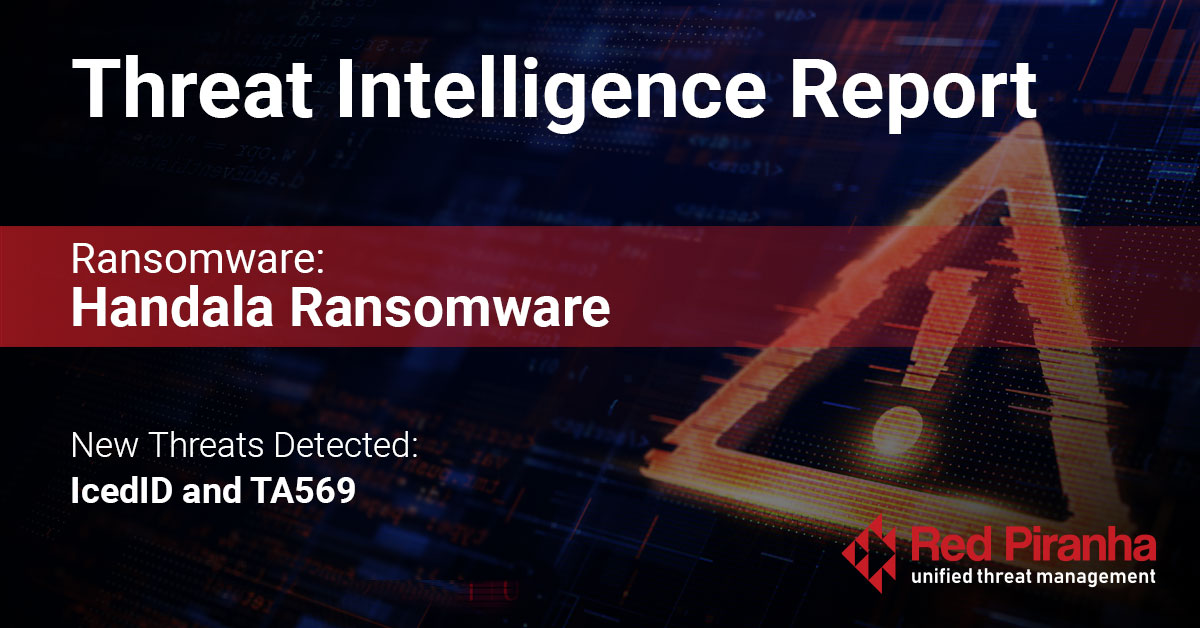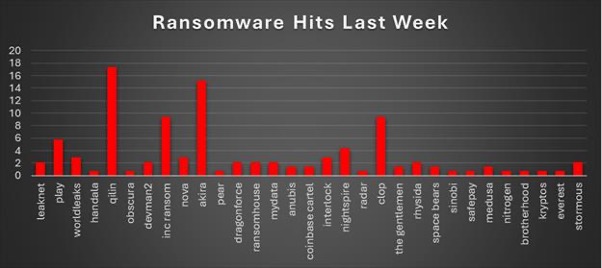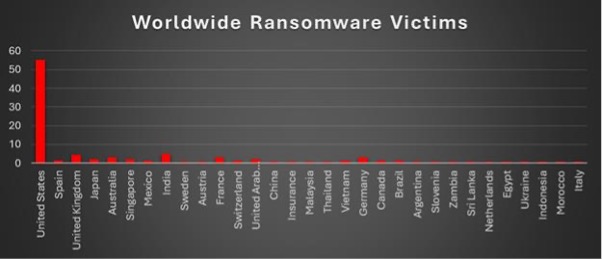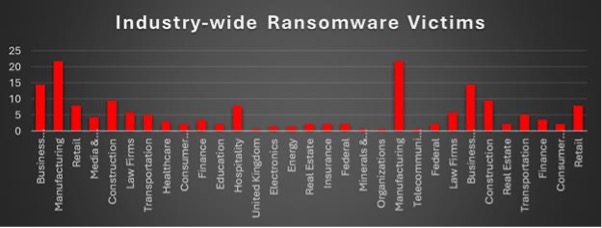
| New Threats Detection Added | • IcedID • TA569 |
|
Detection Summary
|
|
|
Threat Protections Integrated into Crystal Eye
|
81 |
|
Newly Detected Threats
|
8 |
Weekly Detected Threats
The following threats were added to Crystal Eye this week:
|
Threat name:
|
IcedID | ||||||||||||||||||
|
Aka BokBot, IcedID is a malware originally classified as banking malware that was first observed in 2017. It also acts as a loader for other malware, including ransomware. The well-known IcedID version consists of an initial loader that contacts a Loader C2 server, downloads the standard DLL Loader, which then delivers the standard IcedID Bot. IcedID is developed and operated by the actor named LUNAR SPIDER.
|
|||||||||||||||||||
|
Threat Protected:
|
01 | ||||||||||||||||||
|
Rule Set Type:
|
|
||||||||||||||||||
|
Class Type:
|
Malware | ||||||||||||||||||
|
Kill Chain:
|
|
||||||||||||||||||
|
Threat name:
|
TA569 | ||||||||||||||||||
|
TA569 is a prolific group that engages in a variety of financial cybercrimes. They are a well-funded and well-organised group that may operate in Russia or Eastern Europe. Their attacks typically include phishing, website injections, and malware (such as bank trojans) to steal financial information from individuals and/or organisations. Their main attack tools include a web loader called SocGholish, the bank Trojan Chthonic, and the remote-control software NetSupport.
|
|||||||||||||||||||
|
Threat Protected:
|
16 | ||||||||||||||||||
|
Rule Set Type:
|
|
||||||||||||||||||
|
Class Type:
|
Malware | ||||||||||||||||||
|
Kill Chain:
|
|
||||||||||||||||||
Known Exploited Vulnerabilities (Week 1 - November 2025)
For more information, please visit the Red Piranha Forum:
https://forum.redpiranha.net/t/known-exploited-vulnerabilities-catalog-1st-week-of-november-2025/616.
|
Threat
|
CVSS
|
Description | |
|
CVE-2025-48703
|
9
|
CWP Control Web Panel contains a vulnerability within the filemanager module of the software that can allow an unauthenticated remote attacker to execute operating system commands on the system via a HTTP request, this vulnerability affects versions prior to 0.9.8.1205.
|
|
|
CVE-2025-11371
|
7.5
|
Gladinet CentreStack and Triofox contains a vulnerability that can allow an unauthenticated remote attacker to read files on the filesystem and affects all versions up to 16.7.10368.56560. Exploitation of this vulnerability may allow an attacker to gain further access on the system.
|
| Ransomware Report | |
|
The Red Piranha Team conducts ongoing surveillance of the dark web and other channels to identify global organisations impacted by ransomware attacks. In the past week, our monitoring revealed multiple ransomware incidents across diverse threat groups, underscoring the persistent and widespread nature of these cyber risks. Presented below is a detailed breakdown of ransomware group activities during this period. Ransomware Victims – Weekly Overview Qilin led global ransomware activity this week with 17.39 % of reported incidents, maintaining its position as one of the most aggressive and persistent groups operating across multiple regions and sectors. Akira (15.22 %) followed closely, continuing to expand its victim base through opportunistic targeting and affiliate-driven campaigns. Inc Ransom (9.42 %) and Clop (9.42 %) both registered strong presences, marking a sustained resurgence of mid-tier actors leveraging known exploits and data-extortion tactics. A mid-range cluster of activity came from Play (5.8 %), Nightspire (4.35 %), WorldLeaks (2.9 %), Nova (2.9 %), and Interlock (2.9 %), reflecting continuous diversification within active leak-site operations. Several other groups maintained moderate visibility, including DragonForce (2.17 %), RansomHouse (2.17 %), MyData (2.17 %), Leaknet (2.17 %), Rhysida (2.17 %), and Stormous (2.17 %), each sustaining multi-target campaigns at smaller scales. Lower-level but consistent activity (0.72–1.45 %) was observed from Anubis, Coinbase Cartel, The Gentlemen, Medusa, Space Bears, Black Nevas, Genesis, RansomHouse, SafePay, Sinobi, Nitrogen, Brotherhood, Kryptos, Everest, and Handala. |

Handala Ransomware
Handala began as a politically-motivated hacktivist collective and has evolved into a destructive wiper-capable ransomware operator since late 2023. During the Nov 1–7 window, the group emphasised public data dumps and doxxing, continuing its regular weekend disclosures and maintaining pressure on targeted organisations rather than publishing new, large-scale exploit activity.
Detailed TTPs (narrative)
- Initial access — Targeting via spearphishing attachments and credential harvesting; in some cases, exploitation of public-facing services to drop first-stage loaders. Attachments frequently masquerade as utilities or update installers (example: F5UPDATER.exe).
- Staging & loader behaviour — Multi-stage chain: lightweight downloader/loader → Delphi/packed second-stage → in-memory unpacking that writes and executes wiper modules. Loaders often use signed legitimate binaries as proxies to bypass naive allowlists.
- Execution & persistence — Uses scheduled tasks and Run keys for persistence; leverages valid credentials and lateral movement tools (PsExec-like behaviour) to spread; frequently removes shadow copies, modifies BCD/boot settings and overwrites MBR/partition metadata to disable recovery.
- Obfuscation & anti-forensics — Heavy string/base64 obfuscation, custom packing, and anti-VM/sandbox checks. Wiper components include routines to zero out key file types and to corrupt filesystem metadata.
- Data discovery & exfiltration — Automated collection of high-value documents and database dumps. Exfiltration occurs over encrypted HTTPS to anomalous hosts and via cloud storage/Telegram endpoints; JA3/TLS fingerprinting and non-standard ports are observed.
- Impact phase — Wipe-first actions remove backups and recovery artifacts, then selective encryption or public data dump. Public extortion/doxxing via onion sites and Telegram channels follows, pressuring victims and increasing reputational damage.
- Post-compromise interaction — Use of Tor hidden services for victim communication and leak sites; actor maintains a cadence of disclosures to amplify impact.
MITRE ATT&CK Mapping
|
Tactic
|
Technique ID
|
Technique Name
|
|
Initial Access
|
T1566.001
|
Spearphishing Attachment
|
|
Initial Access
|
T1190
|
Exploit Public-Facing Application
|
|
Execution
|
T1059.005
|
Command & Scripting Interpreter (VB / AutoIt / bash)
|
|
Execution
|
T1218
|
Signed Binary Proxy Execution
|
|
Persistence
|
T1547.001
|
Registry Run Keys / Scheduled Tasks
|
|
Privilege Escalation
|
T1078
|
Valid Accounts
|
|
Defence Evasion
|
T1027
|
Obfuscated Files or Information
|
|
Defence Evasion
|
T1562
|
Impair Defences (AV/EDR Tampering)
|
|
Discovery
|
T1083
|
File and Directory Discovery
|
|
Collection
|
T1005 / T1119
|
Data from Local System / Automated Collection
|
|
Exfiltration
|
T1041
|
Exfiltration over C2 Channel
|
|
Impact
|
T1561
|
Disk Wipe
|
|
Impact
|
T1486
|
Data Encrypted for Impact
|
IOCs & C2 Infrastructure
File / Artifact Indicators
- F5UPDATER.exe → Loader (SHA256: fe07dca68f288a4f6d7cbd34d79bb70bc309635876298d4fde33c25277e30bd2)
- Handala.exe → Secondary Delphi loader (SHA256: 454e6d3782f23455875a5db64e1a8cd8eb743400d8c6dadb1cd8fd2ffc2f9567)
- Hatef.exe → Windows wiper (SHA256: e28085e8d64bb737721b1a1d494f177e571c47aab7c9507dba38253f6183af35)
- Hamsa.sh → Linux base64-obfuscated bash wiper (SHA256: 6f79c0e0e1aab63c3aba0b781e0e46c95b5798b2d4f7b6ecac474b5c40b840ad)
- Extensions: .NBA observed
- Ransom notes: READ_ME.txt, readme.txt, READ_ME_.TXT
C2 & Network Infrastructure
Active IPs/Ports:
- 185.216.70.236:8443
- 194.180.48.149:8443
- 194.180.48.18:10443
- 171.22.28.245:41337
- 194.169.175.132
- 193.42.33.29
Domains:
- xn--wnscp-tsa[.]net – fake WinSCP domain
- Exfil endpoints: HTTPS/Tor, Telegram bots, cloud storage (Storj/S3-like)
Onion Links:
- http://vmjfieomxhnfjba57sd6jjws2ogvowjgxhhfglsikqvvrnrajbmpxqqd[.]onion
- https://handala[.]to/
- http://handala-redwanted[.]to
- http://handala-hack[.]to
- supporthandala[.]onion – chat interface for victims
Crystal Eye 5.5 Mitigation
- Email/Web Filtering: Block executable attachments, ISO files, and spoofed domains; enable content disarm.
- EDR Correlation: Detect bcdedit, vssadmin, and PsExec execution chains; alert on AV service stops.
- Network Controls: Block C2 IPs/domains; restrict outbound HTTPS to unknown IPs.
- Segmentation: Limit SMB/WinRM; isolate admin workstations.
- Backup Hardening: Enforce immutable, offline backups and periodic restore verification.
- Response Playbook: Rapid isolate, collect volatile data, rotate credentials, and alert SOC/PR.
Ransomware Victims Worldwide
The United States continued to dominate ransomware targeting this week, accounting for 55.07% of all reported victims. This overwhelming concentration highlights the country’s persistent vulnerability due to its extensive enterprise ecosystem, critical infrastructure, and high-value digital operations.
India (5.07%) ranked second, reflecting a steady increase in attacks on the nation’s growing IT, business outsourcing, and manufacturing sectors. The United Kingdom (4.35%), France (2.9%), Germany (2.9%), and Australia (2.9%) followed, reinforcing the trend of sustained activity across major Western economies.
Mid-tier targeting included Japan (2.17%), Singapore (2.17%), and the United Arab Emirates (2.17%), demonstrating ransomware’s widening geographic footprint across both the Asia-Pacific and Middle Eastern regions.
Smaller but recurring incidents were observed in Spain, Mexico, Switzerland, Vietnam, Brazil, and Canada (each 1.45%), while isolated attacks (each 0.72%) were recorded in Sweden, Austria, China, Malaysia, Thailand, Argentina, Slovenia, Zambia, Sri Lanka, Netherlands, Egypt, Ukraine, Indonesia, Morocco, and Italy.

Industry-wide Ransomware Victims
Manufacturing was the most heavily impacted sector this week, representing 21.74 % of total incidents. Its critical supply-chain role, reliance on legacy operational systems, and minimal tolerance for downtime continue to make it ransomware’s top-value target.
Business Services (14.49 %), Construction (9.42 %), and Retail (7.97 %) followed, underscoring attackers’ preference for industries with extensive digital exposure, vendor interdependencies, and constant financial throughput. These sectors provide multiple entry points and strong leverage for extortion.
Hospitality (7.97 %) remained a high-risk vertical, driven by attacks on reservation systems, payment platforms, and customer data repositories. Law Firms (5.8 %) and Transportation (5.07 %) also featured prominently, reflecting the appeal of legal and logistics data to financially motivated actors.
Mid-tier targeting spanned Media & Internet (4.35 %), Finance (3.62 %), and Healthcare (2.9 %), where disruption and data sensitivity provide strong ransom pressure. Consumer Services (2.17 %), Education (2.17 %), Real Estate (2.17 %), Insurance (2.17 %), and Federal entities (2.17 %) showed steady but moderate exposure.
Smaller yet recurring incidents were observed in Energy (1.45 %), Electronics (1.45 %), Telecommunications (0.72 %), Minerals & Mining (0.72 %), and Organisations (0.72 %), demonstrating that even niche sectors are not immune.

